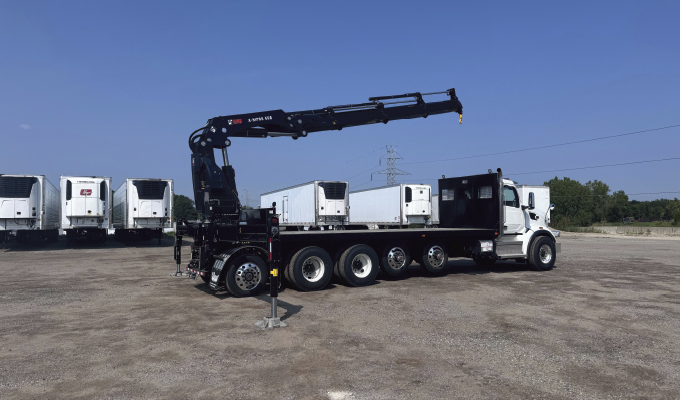In the world of construction, every pound of payload matters. For contractor fleet operators, maximizing load capacity while adhering to stringent regulations is a constant challenge. Lift axles have emerged as a critical solution to this balancing act, allowing for increased payload and improved vehicle versatility. However, specifying the right lift axles for your fleet requires a deep understanding of both regulatory requirements and operational needs. This article aims to guide you through the intricacies of lift axle specification, ensuring your fleet remains compliant, efficient, and profitable.
REGULATORY LANDSCAPE
Before delving into the technical aspects of lift axle specification, it’s crucial to understand the regulatory framework that governs their use. The cornerstone of modern truck weight regulation in the United States was most recently set by the Federal-Aid Highway Amendments of 1974. This legislation established the current weight limits that still apply today:
- 80,000 lbs. gross vehicle weight (GVW)
- 20,000 lbs. for single axles
- 34,000 lbs. for tandem axles
Importantly, these amendments also introduced the Federal Bridge Formula, a complex calculation that correlates a vehicle’s weight to its length, ensuring that heavier vehicles distribute their weight over a longer footprint to protect bridge structures.
However, the regulatory landscape is far from uniform across the United States and Canada. Many states have grandfathered higher weight limits, while others impose additional restrictions on lift axles. For instance, Alaska doesn’t consider lift axles within the power unit’s drive group when calculating legal weight. California effectively restricts vehicles to a single lift axle and requires it to distribute weight within ±10 percent of the average axle load in its group. Georgia doesn’t factor the presence of a lift axle into authorized gross weight calculations. Illinois limits straight trucks to a maximum of four axles.
Given these variations, it’s imperative for fleet operators to thoroughly research and understand the specific regulations in each state where their vehicles operate. This knowledge forms the foundation for proper lift axle specification.
LIFT AXLE TERMINOLOGY
To effectively communicate with suppliers, technicians, and regulators, fleet operators must be familiar with lift axle terminology. Here are some key terms to understand:
Lift Axle: Lift axles can go by a variety of different names; auxiliary axle, liftable, pusher, tag. A lift axle is a non-driven suspension designed to increase payload and comply with bridge law.
Pusher Axle: An auxiliary lift axle positioned ahead of the drive suspension.
Tag Axle: An auxiliary lift axle that trails behind the drive suspension.
Travel: Total vertical movement range of the lift axle, measured at the axle’s spindle centerline.
Lift: The specific height that the lift axle can be raised off the ground.
Caster Angle: The angle between the steering axis and the vertical axis of a wheel, crucial for proper tracking and alignment.
Site or Creep Travel Rating: The rating beyond the suspension’s listed capacity for when auxiliary axles are lifted in a construction site for improved maneuverability and traction.
Center of Gravity (CG): The point where the cumulative mass of a vehicle effectively concentrates, critical for maintaining stability and meeting braking system validations.
NON-STEER VS. SELF-STEER LIFT AXLES
One of the primary decisions in lift axle specification is choosing between Non-Steer and Self-Steer options. Each has its advantages and considerations:
Self-steer lift axles are preferred by 70-80 percent of industry professionals. These axles feature an inbuilt caster angle for passive alignment with the truck’s direction. They eliminate the need for lifting during tight turns, reducing tire and pavement wear. It is recommended to use an automatic lift mechanism or steer-lock feature for reversing when using.
Non-steer lift axles offer a simpler design. These axles are preferred by some because of lower purchase and maintenance costs. They need to be lifted during sharp maneuvers to avoid excessive wear. Unlike self-steer axles, they contribute to the vehicle’s roll stability.
For configurations employing multiple lift axles, it’s crucial to ensure that the primary drive axle suspension has a sufficient creep rating to handle the lift. Additionally, when using self-steer lift axles, consider upgrading to a vocational suspension system capable of compensating for the reduced roll stability.
SPECIFYING, STEP BY STEP
First, gather the initial information. Determine the type of lift axle needed (pusher or tag, Non-Steer or Self-Steer). Identify the required capacity based on your typical loads and regulatory limits. Note the type of drive axle(s) suspension in use. For Non-Steer options, specify the wheel configuration to ensure correct stud length.
Take precise measurements. Measure the frame height at the centerline of the future lift axle installation point.
Determine the ride height for both loaded and unloaded trucks: For loaded trucks, measure the frame height (A) and subtract the loaded tire radius (B). For unloaded trucks, account for additional deflection due to suspension and tire compression.
For pusher axles, measure the driveshaft clearance to avoid interference.
Consider the air control systems. Choose between integrated and non-integrated air controls. Integrated systems offer several benefits, including precision assembly by experienced technicians, significantly reduced installation time, simplified connection with color-coded ports, and they ensure sufficient air volume via the included air tank.
Evaluate the additional options. Consider features that can enhance performance, durability, or safety based on your specific operational needs. These might include advanced steering mechanisms for improved maneuverability, enhanced durability features for harsh environments, and additional safety systems.
Verify that your chosen configuration complies with both federal and state regulations in your areas of operation. This may involve:
- Checking axle spacing against federal and local bridge laws
- Verifying that the total number of axles complies with state-specific restrictions
- Ensuring that the lift axle controls meet state-specific placement requirements
Remember that properly specifying lift axles for your contractor fleet is a complex but crucial process. By following this comprehensive guide, you can ensure your lift axles not only comply with regulations but also optimize your fleet’s performance and profitability.
About the Author
Kirt Weaver is North American sales manager – fleets for Link Mfg. For more, visit www.linkmfg.com.


